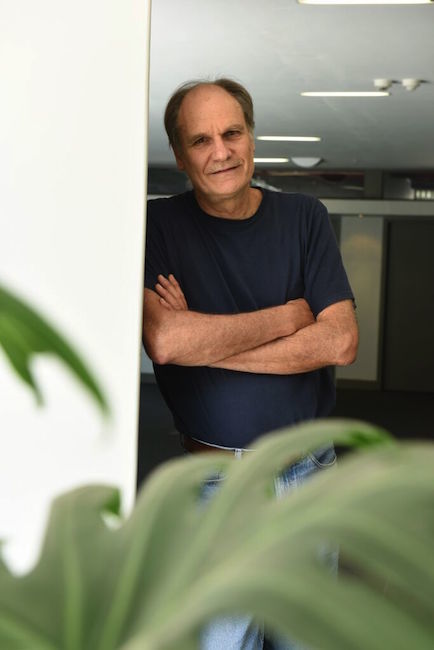George Ekama: treating wastewater
22 December 2015 | Story Carolyn Newton. Photo Michael Hammond.
South Africa is running out of water. A recent Department of Water and Sanitation report revealed that demand for water has overtaken supply in 60% of South Africa’s water management systems. This water scarcity is exacerbated by poor management of industrial, municipal and domestic wastewater. Around half the South African population lives in informal settlements, where waste management systems are very low or non-existent.
Professor George Ekama has made finding solutions to this wastewater problem his life’s work. Since the 1970s he has focused on both municipal and industrial wastewater treatment, inspired by the simple research credo: “locally inspired, globally relevant”.
This credo could be seen in one of his first projects: the algae blooms on Hartebeespoort Dam. Ekama was one of the researchers who developed treatment plants to remove biological nitrogen and phosphorus from municipal wastewater to address this problem, and these plants are now found all over the world.
Ekama’s work has covered the gamut of wastewater treatment solutions, from activated sludge system modelling (which uses mathematical models to study the treatment of wastewater using air and a biological floc composed of bacteria and protozoa) to anaerobic digestion (using microorganisms to break down biodegradable material in the absence of oxygen).
A recent focus has been investigating alternatives to desalination for augmenting urban water supply, such as seawater toilet flushing and source separation of urine. Ekama was the second winner of the Alan Pifer Award, but the significance of his work has only grown since then: in 2013 he was awarded the Order of Mapungubwe, the highest recognition in the land.
Professor George Ekama has made finding solutions to this wastewater problem his life’s work. Since the 1970s he has focused on both municipal and industrial wastewater treatment, inspired by the simple research credo: “locally inspired, globally relevant”.
This credo could be seen in one of his first projects: the algae blooms on Hartebeespoort Dam. Ekama was one of the researchers who developed treatment plants to remove biological nitrogen and phosphorus from municipal wastewater to address this problem, and these plants are now found all over the world.
Ekama’s work has covered the gamut of wastewater treatment solutions, from activated sludge system modelling (which uses mathematical models to study the treatment of wastewater using air and a biological floc composed of bacteria and protozoa) to anaerobic digestion (using microorganisms to break down biodegradable material in the absence of oxygen).
A recent focus has been investigating alternatives to desalination for augmenting urban water supply, such as seawater toilet flushing and source separation of urine. Ekama was the second winner of the Alan Pifer Award, but the significance of his work has only grown since then: in 2013 he was awarded the Order of Mapungubwe, the highest recognition in the land.
 This work is licensed under a Creative Commons Attribution-NoDerivatives 4.0 International License.
This work is licensed under a Creative Commons Attribution-NoDerivatives 4.0 International License.
Please view the republishing articles page for more information.









